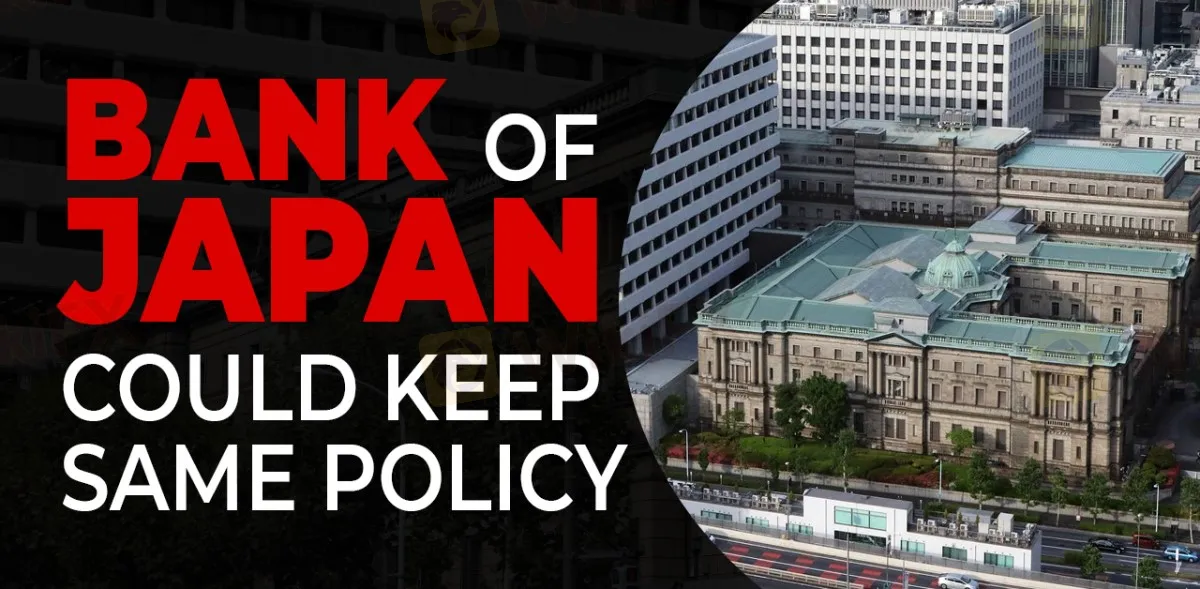Bank Of Japan Could keep same Policy
Abstract:The Bank of Japan is the central bank of Japan. The bank is often called Nichigin for short. The Bank of Japan, as the central bank of Japan, decides and implements monetary policy with the aim of maintaining price1 stability.

The Bank of Japan is the central bank of Japan. The bank is often called Nichigin for short. The Bank of Japan, as the central bank of Japan, decides and implements monetary policy with the aim of maintaining price1 stability.
The Bank of Japan Act states that the Bank's monetary policy should be “aimed at achieving price stability, thereby contributing to the sound development of the national economy.” The Bank of Japan kept the same outlier as compared to the other major central banks which have been raising interest rates at a fast pace throughout this year in a synchronized attempt to bring the inflation down.
This resulted in a down yen and fording Japanese authorities to step in in the currency market in September and October. But, after hitting a 32-year low against the USD, the yen staged a comeback, with the BoJ coming under the microscope as investors try to figure out whether a policy tweak is on the cards sooner rather than later. The Bank meets early on Tuesday, but no policy action is expected.
Governor Kuroda has been strict on the need to maintain ultra-low interest rates and pushed back against calls for reviewing the policy framework. He has been also repeating that the rise in core consumer prices is driven mostly by surging import costs and that inflation would return back to 2% during the next fiscal year.
With average monthly cash earnings slowing to 1.8% y/y in October from 2.2% in September, and headline inflation accelerating to 3.7% y/y from 3.0%, real wages shrank the most since July 2020. Combined with the GDP data revealing a small contraction during Q3, this makes the case for any change in policy or language at Tuesdays meeting unlikely.
Putting everything together, the yen is unlikely to be affected much by Tuesday‘s decision. With dollar traders not touched by the Fed’s last hawkish play for 2022, narrowing yield differentials between the US and Japan could continue working in favor of the yen. The currency might also reclaim its safe-haven status in case concerns about the performance of the global economy resurface. Should market participants continue pricing in 50bps worth of Fed rate cuts by the end 2023 , the yielding dollar could lose of the “ultimate safe heaven” and USD/JPY may continue to slide.
For the bearish outlook to be dismissed, a break above the high of November 22 and at 142.30 may be required. This would signal the pairs return above both the moving averages and the two aforementioned trendlines, and may encourage the bulls to climb towards the psychological zone of 145.00 marked by the inside swing low of October 27. That zone was also proven a strong resistance between September 7 and October 4, but if it fails to stop the advance this time, the rally could stretch towards the 148.80 territory, marked by the highs of the October 30 and November 1.

Read more

FXFlat Review 2025! Read FXFlat Trustpilot Reviews
Thinking of trading with FXFlat in 2025? Before you invest, read what real traders say. This FXFlat Review 2025 dives into the broker’s regulation, trading platforms, and customer feedback.

Stockity Loses Traders’ Favor: Deposit Loss, Login & Withdrawal Issues
Are your profits through the Stockity platform vanishing suspiciously? Does the forex broker allow you to withdraw only your initial deposit? Do you face illegitimate login issues on Stockity? Have you witnessed unexplained fund losses while trading binary options on Stockity? Traders report these unfavorable experiences on online review platforms. These experiences indicate a potential scam from this Marshall Islands-based forex broker. In this article, we have highlighted trader reviews of Stockity. Keep reading!

Hankotrade Review 2025 : Is Hankotrade safe?
Reviews are important because they show you a clear picture of everything — just like a Hankotrade review, which tells you whether the broker is safe or not, what the minimum deposit is, and how many account types Hankotrade offers. Read the latest Hankotrade 2025 review and become an informed trader and investor.

Robinhood Launches UK Futures Trading with CME Access
Robinhood debuts UK futures trading with 40+ CME contracts, $0.75 fees, real-time data, and Legend desktop tools for active traders. Learn access, risks, and rollout.
WikiFX Broker
Latest News
US and UK Sanction Cambodia-Based Prince Group Over $16B Scam
UAE Launches Sixth 'Caution' Campaign to Combat Forex and Online Investment Fraud
David Stockman On How The Fed's Money Printing Broke American Industry... And What Comes Next
Forex24 Faces CySEC Fine for Late Compliance Filing
One Wrong Move Wiped Out a Government Retiree’s Lifetime Savings
"Our Business Has Died": Texas Services Sector Sentiment Slumps Further In October
OctaFX Forex Brokerage $318 million Fraud Case in India: Authorities Arrest Pavel Prozorov!
How Filipinos Can Recover Funds from Crypto Scams Abroad
Top Tips to Avoid Forex Margin Calls and Protect Your Capital
FCA Daily Alert: Checkout FCA Consumer Warning List
Rate Calc


